Crashing is part of cycling as crying is part of love.
Johan Museeuw
- The Lion of Flanders
Crashing is part of cycling as crying is part of love.
Johan Museeuw
- The Lion of Flanders

Conquer the Mountain. Find Your Freedom.

Conquer the Mountain. Find Your Freedom.
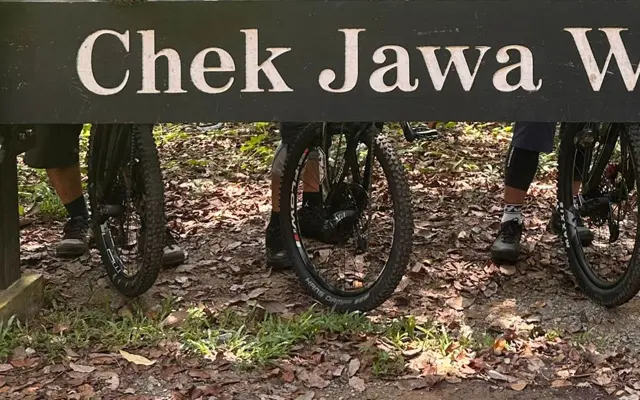
I remember the white-knuckled descent on my first mountain bike ride. My sneakers betrayed me, slipping off the pedals and leaving a bloody gash on my shin.
Limping into the bike shop, a fresh gash throbbing on my shin from a rogue pedal meeting my sneaker, I had one burning question:
Most beginners start with flat MTB shoes (grippy!) for easier entry/exit, then explore clipless for better power transfer as skills progress.
Sure, sneakers might work on a casual bike ride, but conquering mountain trails requires more. Flat pedals offer easy entry and exit, perfect for beginners. But for those seeking a locked-in feel and power transfer, clipless pedals and shoes become the weapon of choice.
Confused about which shoe to choose? Let’s find the perfect mountain bike footwear for shredding any terrain with confidence!
Flat pedals demand a different breed of footwear. Ditch the flimsy soles of sneakers for mountain bike-specific flat shoes with aggressive tread patterns and strategically placed lugs that claw into pedal pins for unmatched grip.
These shoes boast stiff soles that transfer power efficiently during pedaling, maximizing your efforts on climbs and technical sections. But stiffness isn’t everything – the design also incorporates a touch of flexibility for comfort.
However, compared to some other types of cycling shoes, flat pedal shoes might offer a slightly more forgiving feel than extremely stiff road cycling shoes.
This can provide a touch more comfort for long rides or technical descents where some degree of flex can be beneficial for absorbing bumps.
Overall, flat pedal shoe soles strike a balance between stiffness for power transfer and some flexibility for comfort and control.
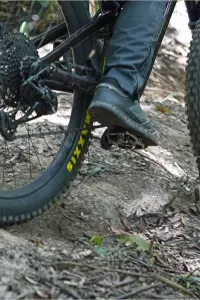
“Shredding down the trail on sneakers felt amazing…until it wasn’t. One glance at the mangled soles, riddled with puncture wounds, and instant regret washed over me. Turns out, conquering gnarly terrain requires more than just guts – it demands the right footwear.”
Don’t be fooled by the misconception that softer rubber equals better grip. Mountain bike-specific flat shoes often have specially designed compounds that provide superior grip on pedals compared to generic rubber found in sneakers. It might seem like a gimmick, but it truly makes a world of difference when conquering gnarly terrain.
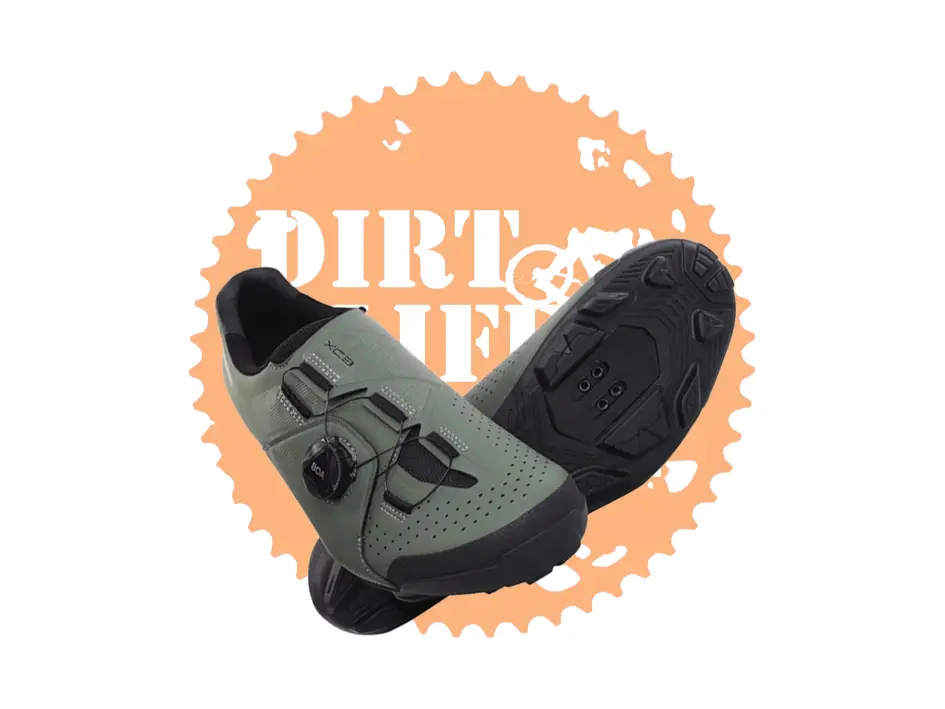
For riders seeking a deeper connection with their bike, clipless shoes and pedals offer a game-changer. Imagine your foot locked securely in place, transferring every ounce of leg power directly to the drivetrain.
These shoes boast stiff soles for maximum efficiency and strategically placed cleats that “clip in” to the pedals.
The result? Unparalleled control and power transfer, allowing you to tackle climbs with ease and unleash explosive power on the descents.
While mastering the clip-in/out motion takes practice, the reward is a feeling of unity with your bike, pushing the boundaries of performance on any terrain.
Clipless shoes for mountain biking typically have very stiff soles, similar to flat pedal shoes but potentially even stiffer. Here’s why stiffness is even more crucial for clipless shoes:
However, while stiffness is a key feature, some high-end clipless shoes might incorporate a slight flex in the toe box area to offer a touch more comfort during walking or standing off the bike.
This minimal flex doesn’t compromise pedaling efficiency but can make walking in clipless shoes a bit more comfortable.
Flat pedal shoes aren’t just about simplicity – they unlock a world of benefits for mountain bikers, especially beginners:
Confidence Through Quick Dabs: Flat pedals let you instantly put a foot down for balance, potentially saving you from a tumble. This is a game-changer for beginners and nervous riders who value the ability to dismount quickly.
Knowing you can bail gracefully builds confidence in your balance and helps you stay connected to the pedals over time.
Easy Starts, Easy Walks: Forget complex setups! Flat pedals allow you to use your existing shoes (or affordable flat pedal models) and hit the trail instantly. Walking around off the bike is also a breeze.
Mastering Technique: Without the “crutch” of clipping in, flat pedals naturally encourage proper pedaling technique, leading to faster skill development as you conquer new challenges. Here’s why:
Freedom & Control: Adjust your foot position with ease for optimal comfort and security, especially when things get technical. This fine-tuning allows you to feel more connected to your bike, enhancing control and confidence.
Budget-Friendly Choice: Compared to clipless systems, flat pedals and shoes are generally much more affordable. This makes them a great way to get started in mountain biking without breaking the bank.
Flat pedals offer a liberating connection to your bike, but they do come with some downsides compared to clipless systems:
Power & Control Trade-Off: While flat pedals feel great for beginners and budget-conscious riders, they can be less secure on technical terrain. This might limit your power output, especially on climbs, and require more finesse for maneuvers like bunny hops.
Maneuverability & Weight: The wider platform of flat pedals provides excellent grip, but it also makes navigating tight sections on the trail trickier. Additionally, flat pedals tend to be slightly heavier than their clipless counterparts. While the wider platform can feel more stable, it might not be ideal for riders who prioritize agility and weight savings.
Risk of Unintentional Dabs: The ease of dismounting with flat pedals, a big benefit for beginners, can also be a downside. In rough terrain, your foot might unintentionally slip off the pedal, leading to a loss of control and potential shin or ankle injuries from pedal strikes.
Choosing the right flat shoe depends on your riding style and the terrain you tackle. Here are some top picks for different needs:
Approach Shoes: These offer a comfortable balance between a hiking shoe and a cycling shoe. They prioritize comfort for walking and hiking but still have a stiff enough sole for decent power transfer. Look for brands like La Sportiva or Five Ten with approach shoe models.
Consider: Five Ten Guide Tennie – This shoe is a popular choice for its blend of comfort, walkability, and good grip on the pedals.
Downhill Shoes: Designed for maximum grip and protection when things get gnarly, downhill shoes are ideal for technical trails and aggressive riding. They boast a stiff sole, good ankle protection, and a super sticky rubber compound for ultimate control. Brands like Five Ten, Ride Concepts, and Leatt offer excellent downhill shoe options.
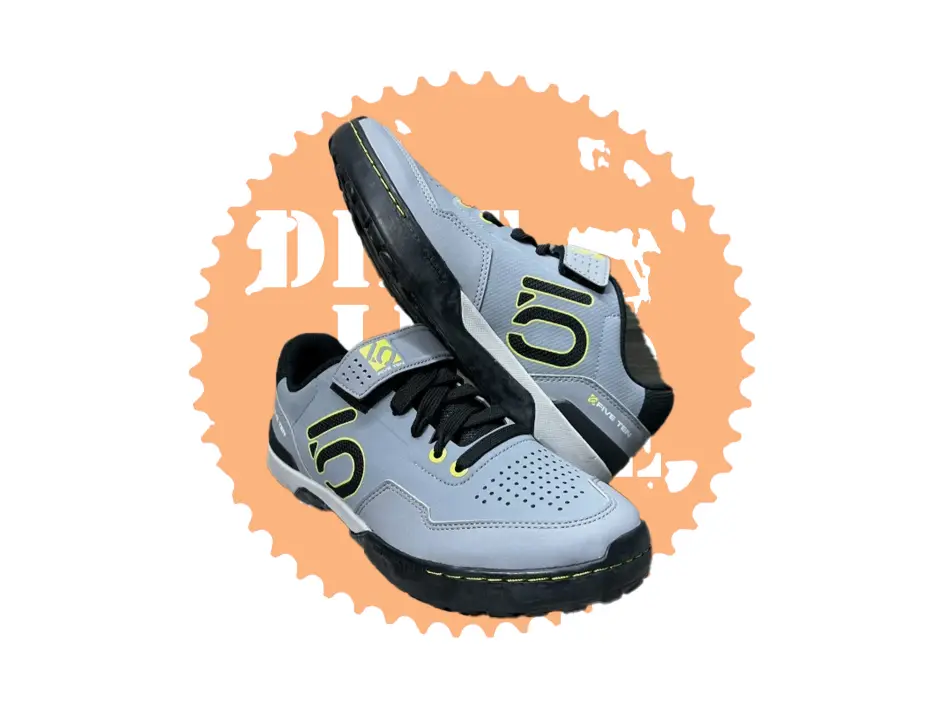
Consider: Five Ten Kestrel Lace – This shoe provides exceptional grip and protection for conquering technical descents with confidence.
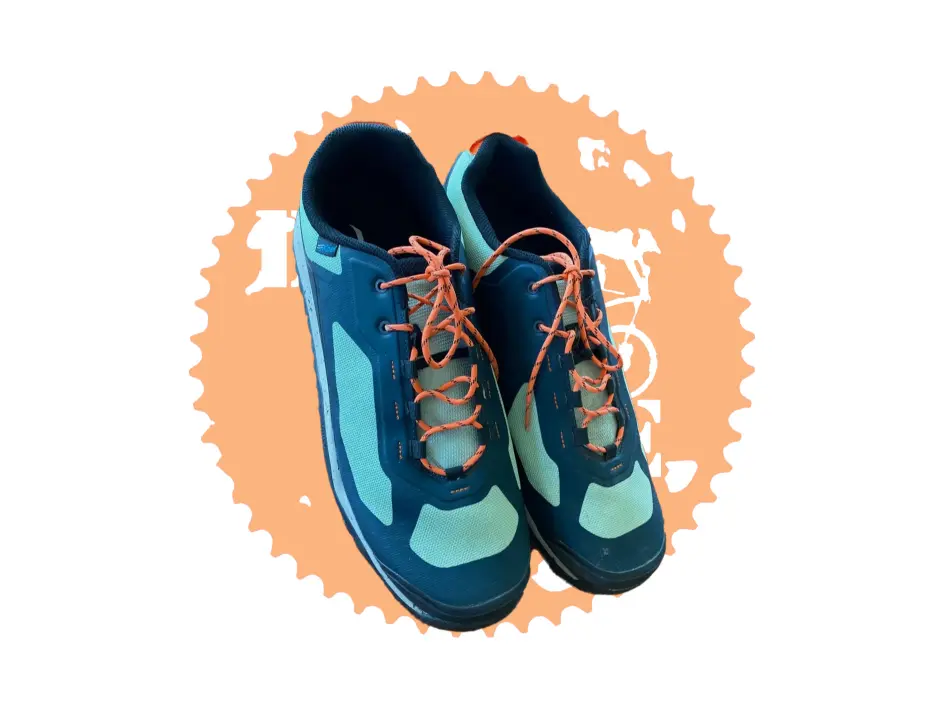
Trail Shoes: A well-rounded choice for most mountain bike disciplines, trail shoes offer a balance between stiffness for pedaling and flexibility for walking/hiking on technical terrain. They often have good ankle support and a lugged sole for grip on loose surfaces. Look for options from Five Ten, Giro, Specialized, and Shimano.
Consider: Specialized Rime Flat: This shoe strikes a good balance between pedaling performance, walking comfort, and a sticky rubber sole for excellent grip.
Additional Factors to Consider:
Flat pedals are a popular choice for beginners and control-oriented riders. They offer the confidence to dab (put a foot down) and dismount quickly, ideal for honing technique.
Their affordability, ease of use, and superior feel on the pedals make them perfect for prioritizing comfort and security on the trail. This focus on fundamentals builds a strong foundation for future riding, whether you stick with flats or eventually transition to clipless pedals for maximum power transfer and efficiency.
Clipless pedals and shoes transform your mountain biking experience by offering a secure connection and unlocking several performance advantages:
Power Surge: Clipless systems are all about efficiency. By utilizing the entire pedal stroke (both down and up!), you generate more power to conquer climbs, accelerate faster, and tackle challenging terrain with ease.
Confidence in the Chaos: Unlike flat pedals, clipless shoes lock you securely in place. This eliminates the fear of foot slippage on technical descents and prevents painful shin encounters with the pedals. Ride with confidence knowing you’re one with the bike.
Command Over Rough Terrain: Gone are the days of bouncing around on bumpy trails. Clipless pedals keep your feet firmly planted, providing superior control and a more connected feeling with your bike. Navigate even the gnarliest sections with precision and stability.
Comfort on Extended Journeys: Long rides become a breeze with clipless shoes. Their rigid design distributes pressure evenly across your feet, minimizing fatigue and discomfort compared to softer flat pedal options. Ride further and explore more without sacrificing comfort.
Efficiency Equals More Speed & Distance: The combination of improved power transfer, secure connection, and better control with clipless systems translates to faster rides and increased distance covered. Less wasted energy means more time shredding the trails.
Clipless pedals and shoes offer undeniable performance advantages, but they’re not a one-size-fits-all solution. Here are some things to consider:
Cost & Learning Curve: Clipless systems require an upfront investment in both pedals and specialized shoes. Mastering clipping in and out takes practice, which can feel awkward compared to the intuitive nature of flat pedals.
Unclipping Jitters: A common concern with clipless pedals is the risk of falls, especially for beginners. Unclipping quickly enough when stopping or in unexpected situations can lead to embarrassing tumbles.
More Setup & Maintenance: Setting up clipless pedals involves more tinkering than flat pedals. Fine-tuning cleat adjustments and ensuring proper tension is crucial for a smooth experience. There are also more parts that could potentially break on the trail, adding an element of concern.
Walking Woes & Limited Foot Control: Clipless shoes prioritize pedaling efficiency, often at the expense of walking comfort. Their stiff soles and cleat attachments can make walking awkward. Additionally, adjusting your foot position on the pedals is more restricted compared to flat pedals.
Clipless pedals offer numerous performance benefits, but one crucial aspect for a smooth and safe ride is compatibility. Here’s why:
Shimano SH-ME Series: A trusted brand in cycling, Shimano offers a wide range of SH-ME series shoes catering to different budgets and riding styles. They frequently update their lineup, so be sure to check their website for the newest additions within the SH-ME series.
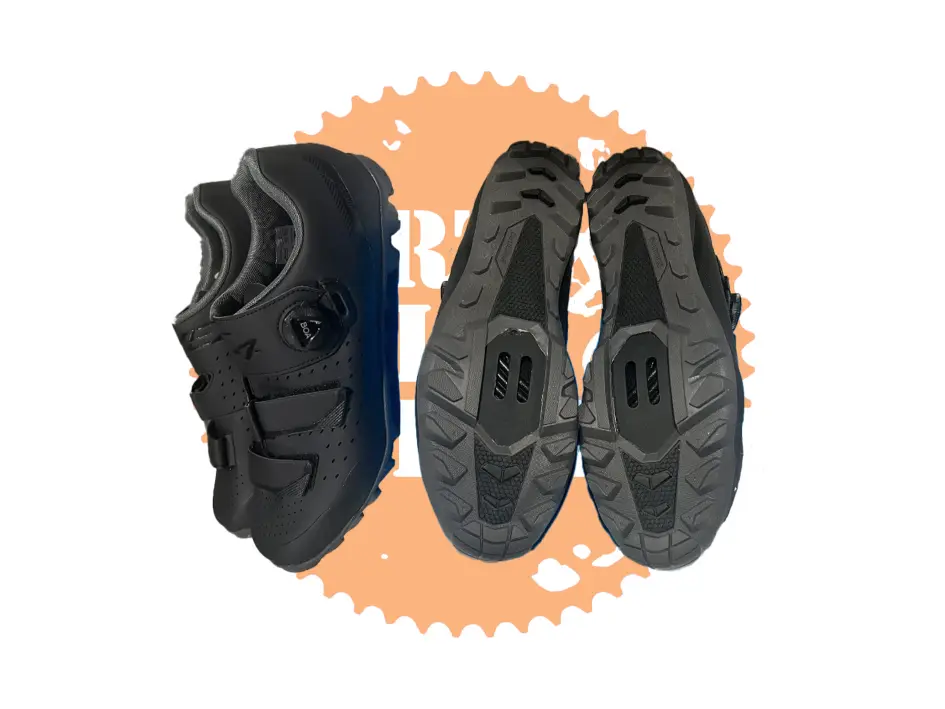
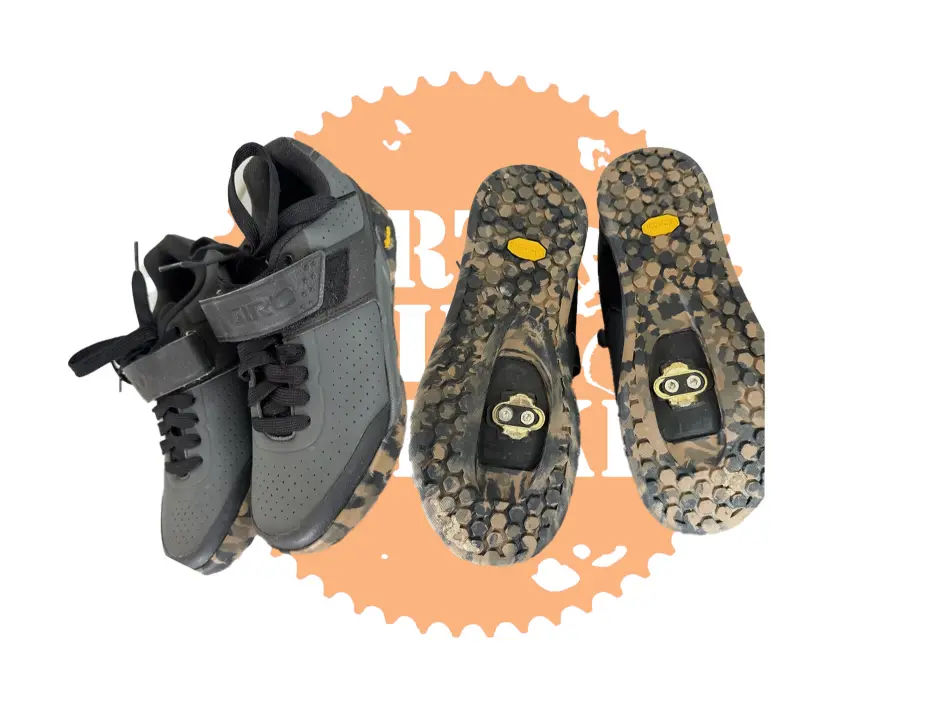
Giro Chamber II: Favored for their balance of comfort, performance, and affordability, the Giro Chamber II shoes are a popular choice for both beginners and experienced riders. They offer a good fit, excellent power transfer, and a walkable design. Consider checking Giro’s website to see if they have a newer version of the Chamber II available that might offer additional features or improvements.
Specialized Recon: Known for their innovative technology and sleek design, Specialized Recon shoes prioritize lightweight performance. They boast a stiff carbon sole for efficient pedaling and a comfortable Boa® Fit System for precise micro-adjustments. Similar to Giro, check Specialized’s website to see if they have a newer iteration of the Recon shoes available.
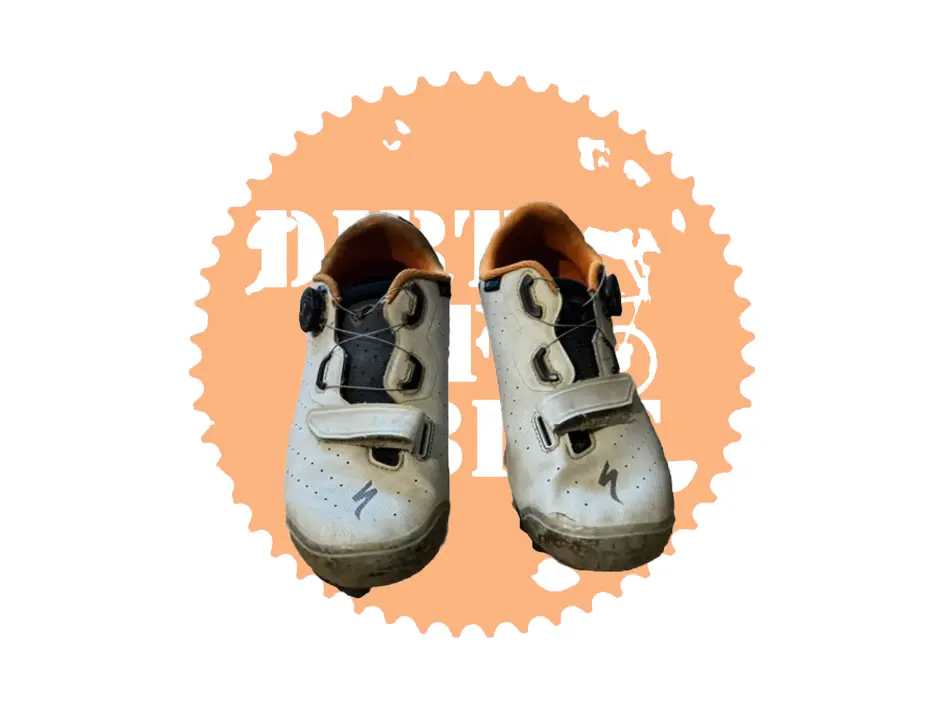
Choosing the right shoe depends on your riding style, budget, and personal preferences. Experiment with different options! Consider factors like stiffness for pedaling efficiency, closure system for adjustability, and walking comfort. Research online reviews and cycling websites to stay updated on the latest clipless shoes. Flat pedals offer a comfortable platform for beginners and prioritize control with easy dismounts. However, clipless systems unlock significant power transfer for experienced riders willing to invest in the learning curve and maintenance.
Absolutely! Regular sneakers just won’t cut it on the trail. Mountain bike shoes are designed to lock you in for better control and power transfer. Here’s why they’re a game-changer:
Investing in the right footwear is a crucial step to conquering any mountain bike adventure. With a good pair of mountain bike shoes on your feet, you’ll be shredding trails with confidence in no time!
Tight budget? Totally get it. But here’s the thing: skimping on shoes can cost you more in the long run. Flimsy soles mean sketchy slips, and weak materials offer no protection from rocks and roots.
For instance, I purchased a pair of imitation hybrid mountain bike shoes intending to use them with clipless pedals. However, the bolt cleat came off after just one ride. I switched to flat pedals, but the shoes kept slipping off when I encountered root obstacles. Ultimately, I had to remove the rubber studs from the center of the soles to make them usable.
In the end, investing in proper shoes is a smarter choice. Your feet (and your wallet) will thank you for it. They’ll last longer, protect you better, and help you ride with more confidence.
The perfect mountain bike shoe depends on how you conquer the trails:
Cross-Country (XC): Light & Fast XC riders prioritize efficiency on climbs and lightweight performance. Flat pedals can be a good starting point for beginners for easier control, but most XC riders choose clipless shoes to maximize power transfer while pedaling.
Downhill (DH): Built to Shred DH riders need shoes that can handle the gnarliest terrain. While some beginners and intermediate riders might opt for flat pedals for quicker foot placement in turns, experienced riders might choose clipless for power transfer or stick with flats for confidence and control. DH shoes are the heaviest and bulkiest with the most protection. Some even have ankle cuffs for added security.
Trail & Enduro: Finding Your Flow Trail and enduro riders crave versatility. Flat pedals are often more comfortable for beginners learning and navigating technical sections. Experienced riders choose based on preference:
Look for a mid-weight shoe that balances performance with durability for tackling any trail challenge.
Remember: The perfect shoe boosts your confidence and riding experience.
Mountain biking demands different gear than road cycling. While your trusty road shoes might feel comfortable, here’s why they’re not ideal for the dirt:
Upgrade Your Ride: Gear up with proper mountain bike shoes and pedals for a safer and more enjoyable adventure on the trails! They’ll provide better grip, control, and easier walking on technical terrain, letting you focus on the ride.
Sure, your mountain bike shoes will get dirty again on the trails. But here’s the thing: keeping them clean offers surprising benefits:
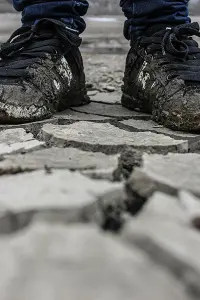
Better Performance: Caked-on mud and grime can stiffen the shoe, reducing power transfer and flexibility. Regular cleaning keeps them performing at their best.
Fresher Feel: Let’s face it, sweaty shoes after a ride can get funky. Cleaning combats odors and keeps them feeling fresh for your next ride.
Longer Lifespan: Dirt and debris can wear down materials faster. Regular cleaning removes them and extends the life of your shoes.
Here’s how to show your shoes some love:
By taking care of your mountain bike shoes, you’ll enjoy better performance, a fresher ride, and get more mileage out of them. Now get out there and shred the trails!
Ultimately, the “right” shoe boils down to your riding style:
Experiment and Conquer: Try both flat and clipless pedals to discover your preference. Don’t forget proper sizing is crucial – get your feet measured for a snug, comfortable fit that maximizes control on the trail. Loose shoes can lead to sloppy technique and decreased enjoyment.
So, lace up, clip in (or not!), and get out there! With the perfect footwear for your riding style, you’re ready to shred any mountain bike adventure.